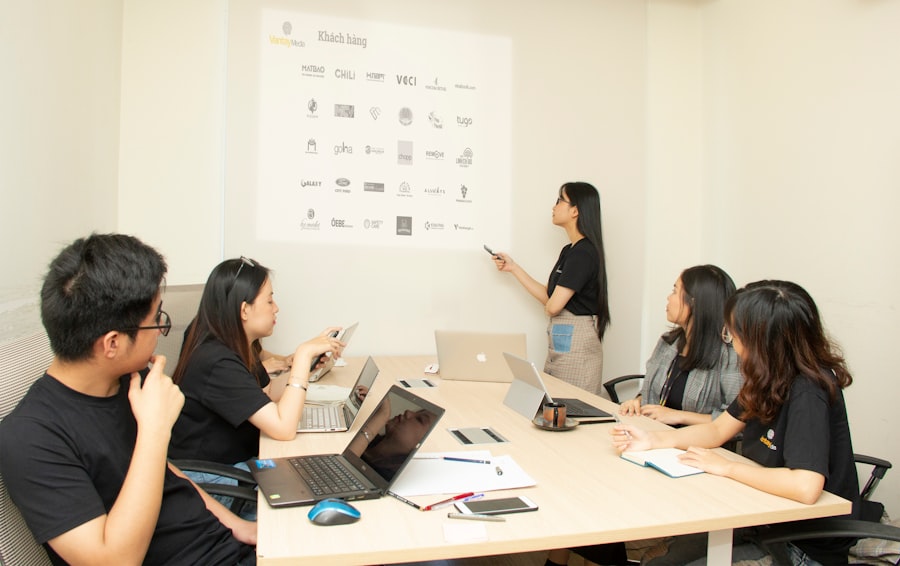
Close
As a company that specializes in providing remote teams and dedicated developers, we recognize that employee turnover can significantly impact our operations and overall success. Understanding the reasons behind this phenomenon is crucial for us to create a stable and productive workforce. Employee turnover can stem from various factors, including job dissatisfaction, lack of career advancement opportunities, and inadequate compensation.
By delving into these reasons, we can better tailor our strategies to retain our talented workforce. Moreover, we must consider the external factors that contribute to turnover. The competitive landscape of the tech industry often leads to employees being lured away by enticing offers from rival companies.
Additionally, personal circumstances such as relocation or family commitments can also play a role in an employee’s decision to leave. By acknowledging these multifaceted reasons for turnover, we can develop a more comprehensive approach to retention that addresses both internal and external influences.
To combat employee turnover effectively, we must first establish a robust recruitment and selection process. This begins with clearly defining the roles we are hiring for and the skills required for success within our organization. By ensuring that we attract candidates who align with our company values and culture, we can significantly reduce the likelihood of turnover.
Our recruitment strategy should not only focus on technical skills but also on soft skills that foster collaboration and teamwork, especially in a remote work environment. Furthermore, we believe in the importance of a thorough selection process that includes multiple stages of evaluation. This may involve initial screenings, technical assessments, and interviews with various team members.
By engaging our current employees in the hiring process, we can ensure that new hires will fit seamlessly into our existing teams. This collaborative approach not only enhances the quality of our hires but also fosters a sense of ownership among our current employees, ultimately leading to higher retention rates.

A positive work environment is essential for employee satisfaction and retention. We strive to cultivate a culture that promotes inclusivity, respect, and collaboration among our remote teams. By fostering open communication and encouraging team members to share their ideas and feedback, we create an atmosphere where everyone feels valued and heard.
This sense of belonging is vital in reducing turnover, as employees are more likely to stay with a company where they feel appreciated. Additionally, we recognize that a strong company culture extends beyond just the work itself. We actively promote work-life balance by encouraging flexible schedules and providing resources for mental health and well-being.
By prioritizing our employees’ overall happiness and well-being, we create an environment where they can thrive both personally and professionally. This holistic approach not only enhances job satisfaction but also strengthens our commitment to retaining top talent.
Investing in our employees’ growth and development is another key strategy for reducing turnover. We understand that individuals seek opportunities to advance their careers and acquire new skills. By offering training programs, mentorship opportunities, and access to online courses, we empower our team members to take charge of their professional development.
This commitment to growth not only enhances their skill sets but also fosters loyalty to our organization. Moreover, we encourage internal mobility within our company. When employees see a clear path for advancement, they are less likely to seek opportunities elsewhere.
By promoting from within and providing avenues for career progression, we demonstrate our investment in our employees’ futures. This not only boosts morale but also creates a sense of stability within our teams, ultimately leading to lower turnover rates.
Compensation plays a significant role in employee retention. We understand that offering competitive salaries is essential in attracting and retaining top talent in the tech industry. Our compensation packages are designed to reflect the skills and experience of our employees while remaining competitive within the market.
Additionally, we regularly review our compensation structures to ensure they align with industry standards and employee expectations. Beyond salary, we also recognize the importance of comprehensive benefits packages. We offer health insurance, retirement plans, and other perks that contribute to our employees’ overall well-being.
By providing these benefits, we demonstrate our commitment to supporting our team members both inside and outside of work. This holistic approach to compensation not only enhances job satisfaction but also fosters loyalty among our employees.

Effective communication is vital for maintaining employee engagement and reducing turnover. In a remote work environment, it is essential to establish clear channels of communication that allow team members to connect easily with one another. We utilize various tools and platforms to facilitate collaboration and ensure that everyone feels connected, regardless of their physical location.
Moreover, we prioritize regular check-ins and feedback sessions between managers and team members. These conversations provide an opportunity for employees to voice their concerns, share their achievements, and discuss their career aspirations. By fostering an open dialogue, we create an environment where employees feel valued and engaged in their work.
This proactive approach not only enhances job satisfaction but also reduces the likelihood of turnover.
Recognition plays a crucial role in employee retention. We believe that acknowledging our team members’ hard work and contributions is essential for fostering a positive work environment. Whether through formal recognition programs or informal shout-outs during team meetings, we make it a priority to celebrate our employees’ achievements regularly.
Additionally, we understand that rewards do not always have to be monetary. Simple gestures such as personalized thank-you notes or public recognition can go a long way in making employees feel appreciated. By creating a culture of recognition, we reinforce the value of each team member’s contributions, ultimately leading to higher levels of engagement and lower turnover rates.
Even with the best retention strategies in place, some turnover is inevitable. To learn from these experiences, we conduct exit interviews with departing employees to gain insights into their reasons for leaving. This feedback is invaluable as it allows us to identify patterns or areas for improvement within our organization.
By analyzing exit interview data, we can make informed decisions about changes needed to enhance employee satisfaction and retention. Whether it involves adjusting our recruitment processes or addressing specific concerns raised by departing employees, we are committed to using this feedback constructively. This continuous improvement mindset not only helps us retain existing talent but also positions us as an employer of choice in the competitive tech landscape.
In conclusion, addressing employee turnover requires a multifaceted approach that encompasses recruitment strategies, workplace culture, growth opportunities, compensation packages, communication practices, recognition efforts, and feedback mechanisms. By implementing these strategies thoughtfully and consistently, we can create an environment where our employees feel valued, engaged, and motivated to stay with us for the long term. As we continue to evolve as a company specializing in remote teams and dedicated developers, we remain committed to fostering a workplace that attracts top talent while minimizing turnover rates.
One related article to Strategies for Reducing Employee Turnover is “How Staff Augmentation Can Transform Your Project Management.” This article discusses how utilizing staff augmentation can help improve project management processes and increase efficiency within a company. To learn more about this topic, you can read the full article here.
Employee turnover refers to the rate at which employees leave a company and are replaced by new employees. It is often measured as a percentage of the total workforce.
High employee turnover can be costly for businesses, as it can result in increased recruitment and training expenses, decreased productivity, and a negative impact on company culture.
Some strategies for reducing employee turnover include offering competitive salaries and benefits, providing opportunities for career development and advancement, creating a positive work environment, and implementing effective communication and feedback processes.
Businesses can measure and track employee turnover by calculating the percentage of employees who leave the company within a certain time period, as well as conducting exit interviews to gather feedback from departing employees.
Reducing employee turnover can lead to cost savings, increased employee morale and engagement, improved productivity, and a more stable and positive work environment.
Augmented Team Pvt Ltd

